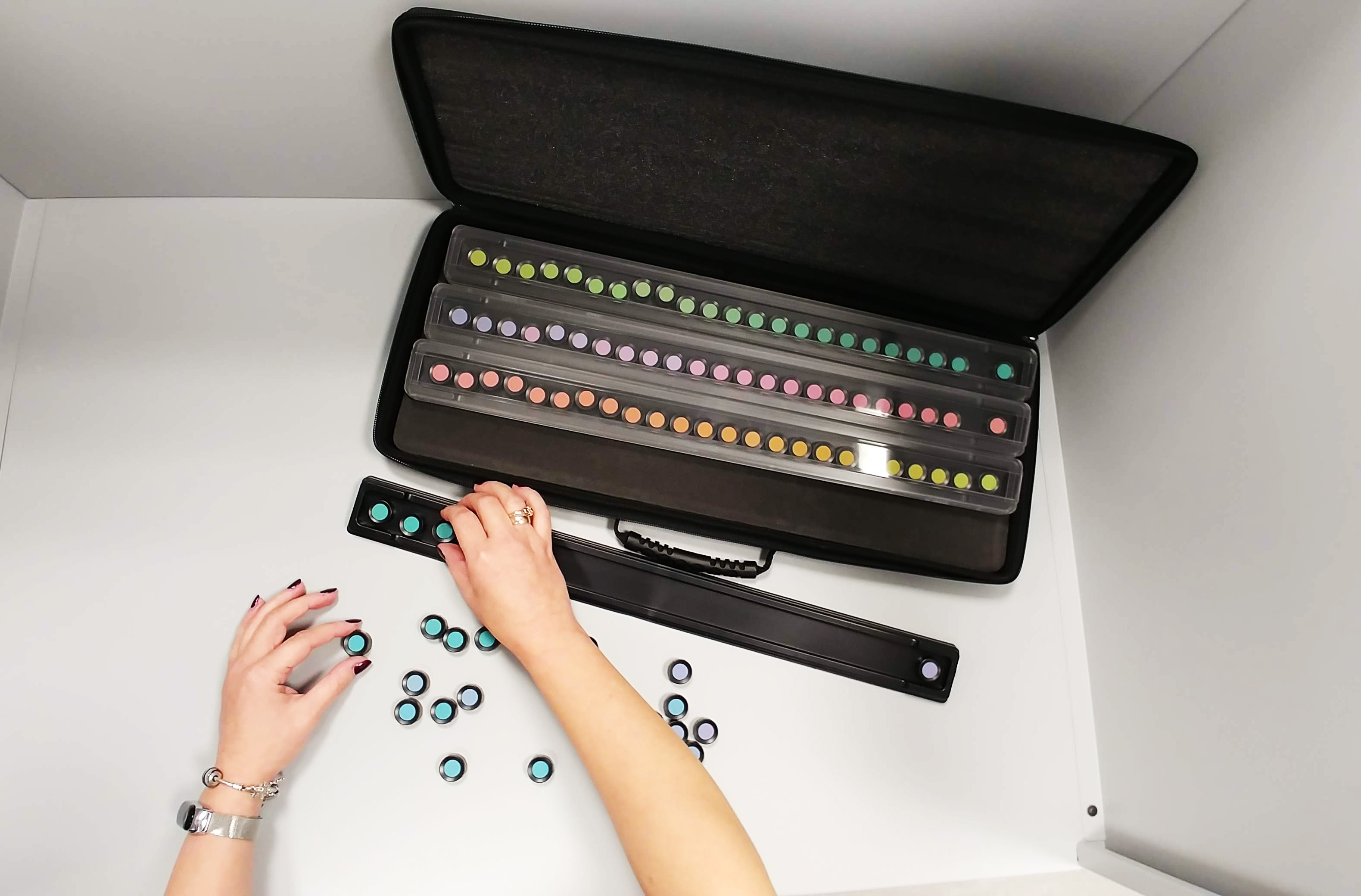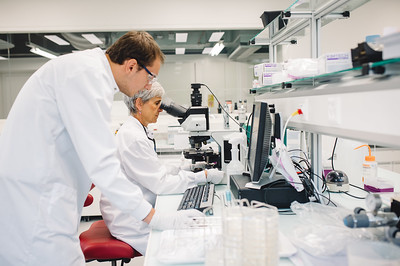Hereditary retinal dystrophies
2. Stargardt disease
Stargardt disease is the most common macular dystrophy, with a prevalence of 1/10,000. It is inherited in an autosomal recessive manner, and it is characterized by a loss of central visual acuity within the first two decades of life.
Diagnosis is made by combining clinical data and tests such as fluorescein angiography (FAG), autofluorescence (AF) or optical coherence tomography (OCT).
In the eye fundus, depending on the evolutionary stage of the disease, we will find macular atrophic changes and the characteristic flecks, which are yellowish spots that vary in size, shape, and distribution, resulting from the accumulation of lipofuscin in the retinal pigment epithelium (RPE).
In the FAG we will see a very characteristic image: the "choroidal silence", the result of the accumulation of lipofuscin and present in 80% of patients. In the FA this accumulation of lipofuscin can be observed in the form of diffuse hyperautofluorescence, the flecks appear hyperautofluorescent and represent areas of greater risk of loss of photoreceptors. In the OCT we can observe photoreceptor loss, RPE abnormalities and retinal thinning.
Follow-up for these patients is carried out annually with refraction under cycloplegia, colour test (Farnsworth) that allows studying the state of the macula, eye fundus and OCT. FA and ERG can be performed every year or two to quantify the degree of photoreceptor affectation.

Mutacions in Stargart disease
Stargardt’s disease and fundus flavimaculatus are caused by mutations in the same gene, the ABCR (or ABCA) gene located on the short arm of chromosome 1. More than 700 gene mutations have been described so far. This gene encodes a protein that plays an important role in the transport of energy to and from the photoreceptors. As a result of its mutation, an abnormal production and accumulation of toxic lipofuscin pigments occurs in the external segments of the photoreceptors and pigment epithelial cells of the retina.
Research in Stargardt disease
Gene therapy involves the introduction of a normal ABCA gene into the photoreceptors via a vector. In this case, given that the DNA chain of the ABCA gene is large in size (6.8kb), lentiviruses are used as vectors, as they can harbor chains ranging from 8 to 9 kb.
Currenlty scientists are testing the safety and efficacy of several drugs (such as Emixustat or Zimura), viral vectors that could potentially modify the altered gene in Stargardt disease, and transplantation of stem cells injected below the retina.

Most of these studies, however, have not yet concluded or are in the early stages of research. At the moment, it is best to follow regular ophthalmological check-ups in a specialized unit and wear glasses with filters to protect the eyes from sunlight, since it is known that exposure accelerates the progression of the disease.
Patients with Stargardt disease must know that they should avoid vitamin A supplements, as it is a precursor of lipofuscin, which is already excessively accumulated in the retina of these patients.